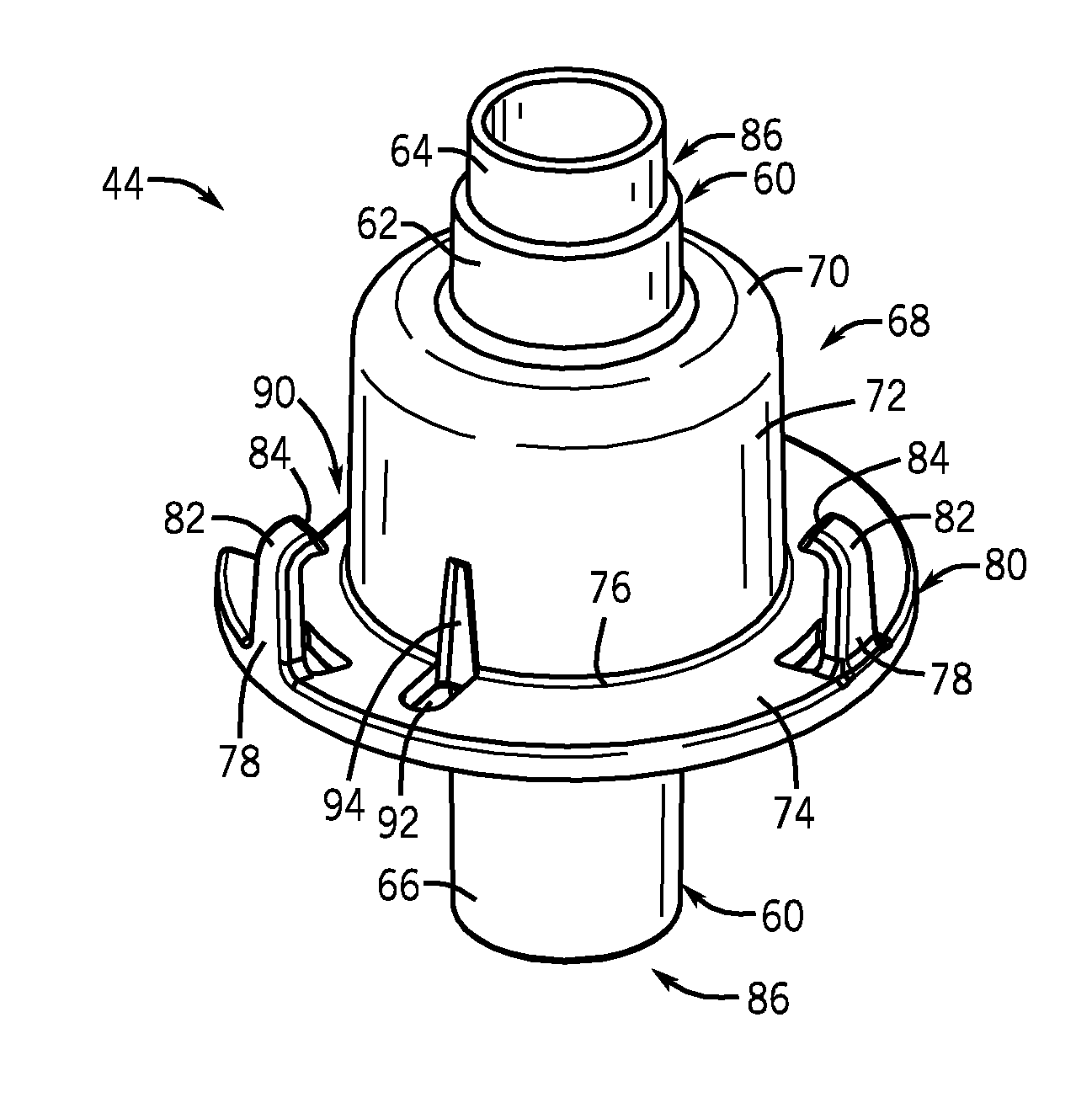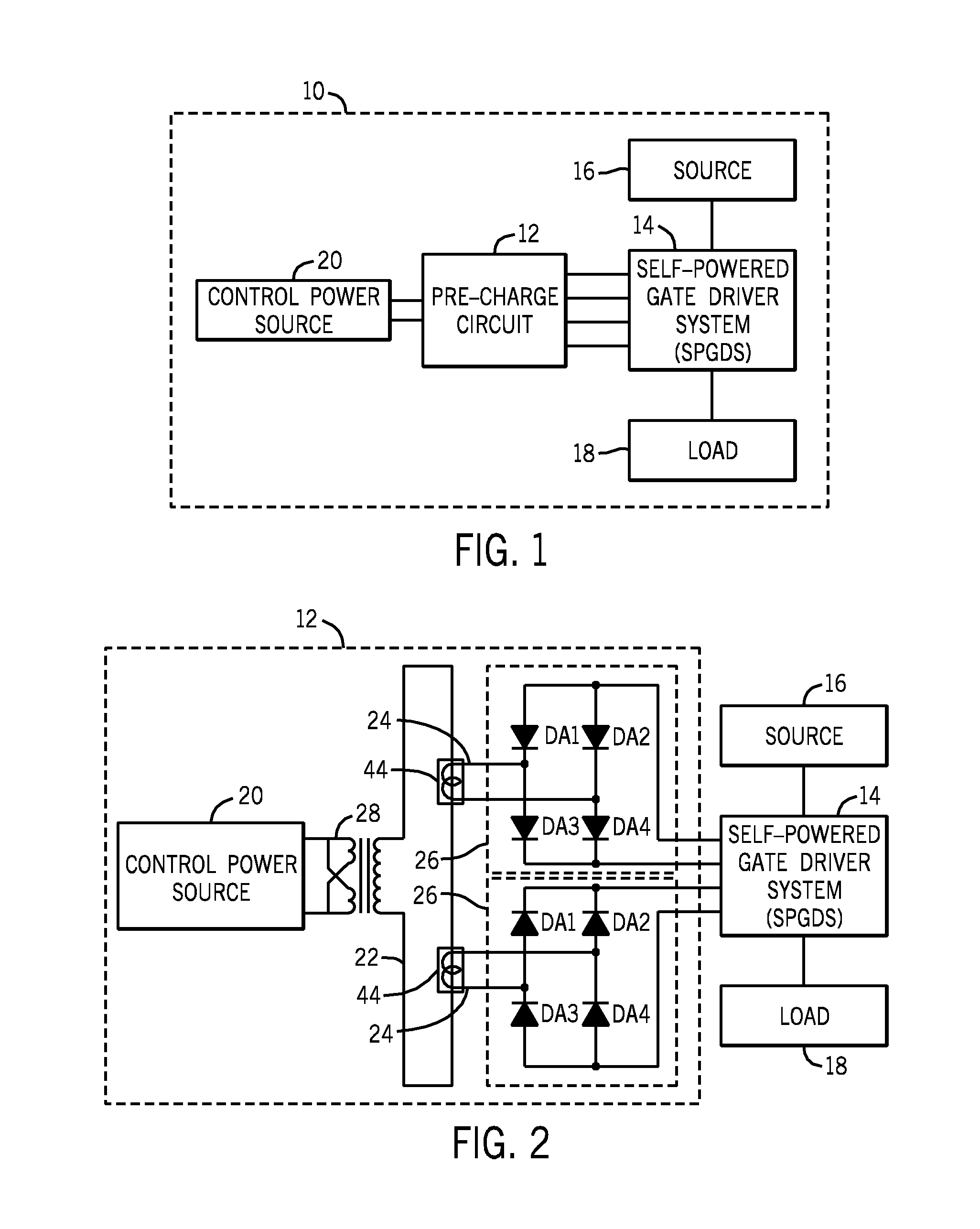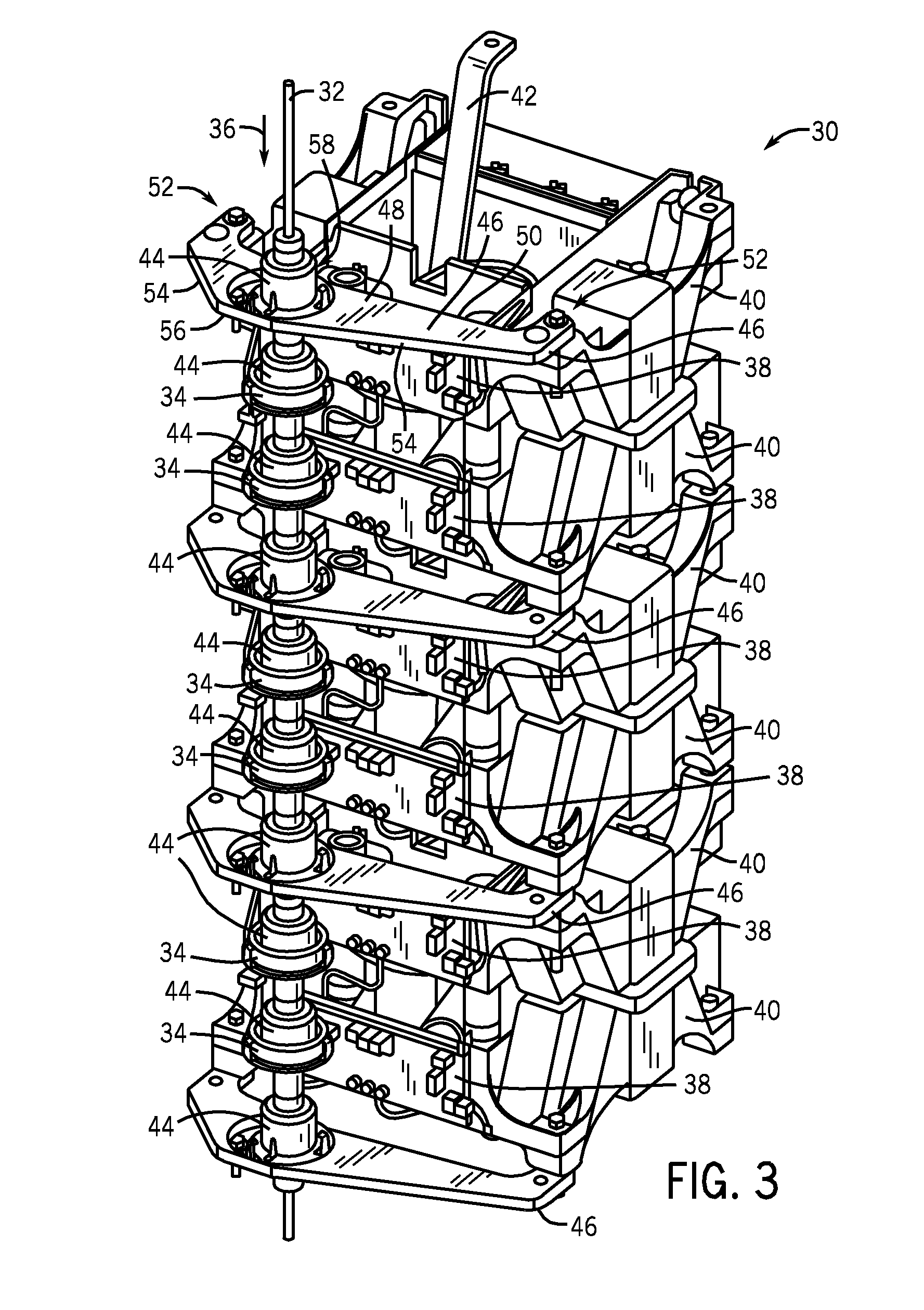Insulating support flange for current loop system
- Summary
- Abstract
- Description
- Claims
- Application Information
AI Technical Summary
Benefits of technology
Problems solved by technology
Method used
Image
Examples
Embodiment Construction
[0018]As described above, SPGDSs capture energy from a power supply driving a load using a series of capacitors connected to self-powered circuitry. More specifically, the SPGDSs draw current and store charge through voltage differentials across SCRs. The stored charge may then be used to power drivers of the SPGDSs. However, as also described above, SPGDSs are in need of improvement because it is now recognized that SPGDSs are associated with delays in operation and response time. When transitioning from certain modes of operation, the capacitors may lack enough charge to power the drivers. Consequently, a re-activated SPGDS may exhibit a delay before conducting current as the capacitors charge over a few cycles. For example, during full speed operation, some systems bypass the SCRs to deliver power directly from the power supply to the motor. Without a voltage differential across the SCRs, the capacitors may discharge, leaving the drivers without a source of power. Thus, when such...
PUM
 Login to View More
Login to View More Abstract
Description
Claims
Application Information
 Login to View More
Login to View More - R&D Engineer
- R&D Manager
- IP Professional
- Industry Leading Data Capabilities
- Powerful AI technology
- Patent DNA Extraction
Browse by: Latest US Patents, China's latest patents, Technical Efficacy Thesaurus, Application Domain, Technology Topic, Popular Technical Reports.
© 2024 PatSnap. All rights reserved.Legal|Privacy policy|Modern Slavery Act Transparency Statement|Sitemap|About US| Contact US: help@patsnap.com










